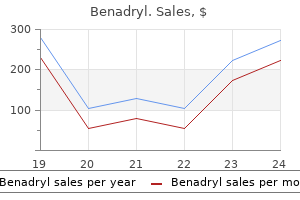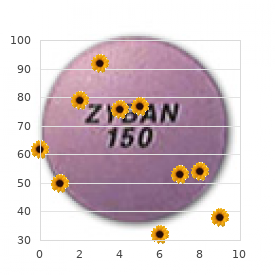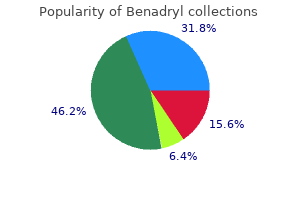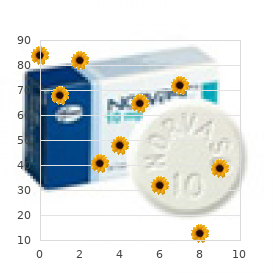Only $1.47 per item
Benadryl dosages: 25 mg
Benadryl packs: 60 pills, 90 pills, 120 pills, 180 pills, 270 pills
In stock: 919
10 of 10
Votes: 50 votes
Total customer reviews: 50
Description
Patients should be advised to avoid hazardous activities if sedation is prominent mold allergy symptoms joint pain benadryl 25 mg order without a prescription. However, in the absence of an overdose or preexisting cardiac impairment, serious effects are rare. Tricyclics potentiate responses to direct-acting sympathomimetics (ie, drugs such as epinephrine and dopamine that produce their effects by direct interaction with adrenergic receptors). Responses to peripheral muscarinic blockade include hyperthermia, flushing, dry mouth, and dilation of the pupils. Absorption of ingested drug can be reduced with gastric lavage followed by ingestion of activated charcoal. Intravenous administration of sodium bicarbonate is recommended to control dysrhythmias caused by cardiac toxicity. Dysrhythmias should not be treated with procainamide or quinidine, because these drugs cause cardiac depression. Older-adult patients with glaucoma or constipation and males with benign prostatic hypertrophy can be especially sensitive to anticholinergic effects. Hence, for these patients, a drug with weak anticholinergic properties (eg, nortriptyline) would be appropriate. The greatest concern is hypertensive crisis, which can be triggered by eating foods rich in tyramine. High doses are undesirable in that they pose an increased risk of adverse reactions. They are unnecessary in that onset of therapeutic effects is delayed regardless of dosage, and hence aggressive initial dosing offers no benefit. However, if there is no observable response, plasma drug levels can be used as a guide. If a patient has not responded to imipramine, measurements should be made to ensure that the plasma level is adequate. If bedtime dosing causes residual sedation in the morning, dosing earlier in the evening can help. Although once-a-day dosing is generally desirable, not all patients can use this schedule. Older adults, for example, can be especially sensitive to the cardiotoxic actions of the tricyclics. As a result, if the entire daily dose were taken at one time, effects on the heart might be intolerable. For example, if the patient is experiencing insomnia, a drug with prominent sedative properties (eg, doxepin) might be selected. Conversely, if daytime sedation is undesirable, a less sedating agent (eg, desipramine) might be preferred.

Calcium Lactogluconate (Calcium). Benadryl.
- High cholesterol.
- High blood pressure.
- What is Calcium?
- Reducing weight and body fat while dieting.
- Reducing symptoms of premenstrual syndrome (PMS), especially mood swings, bloating, food cravings, and pain. Increasing fetal bone density in pregnant women with low calcium intake.
Source: http://www.rxlist.com/script/main/art.asp?articlekey=96760
Although dopamine receptors are classified as adrenergic allergy symptoms september buy benadryl 25 mg cheap, these receptors do not respond to epinephrine or norepinephrine. Of these, only three-designated M1, M2, and M3-have clearly identified functions. At this time, practically all drugs that affect muscarinic receptors are nonselective. Accordingly, since our understanding of these receptors is limited, and since drugs that can selectively alter their function are few, we will not discuss muscarinic receptor subtypes further in this chapter. However, we will discuss them in Chapter 14, in the context of drugs for overactive bladder. In this section we discuss what a receptor subtype is and why receptor subtypes matter. Receptors that respond to the same transmitter but nonetheless are different from one another would be called receptor subtypes. For example, peripheral receptors that respond to acetylcholine can be found (1) in ganglia of the autonomic nervous system, (2) at neuromuscular junctions, and (3) on organs regulated by the parasympathetic nervous system. However, even though all of these receptors can be activated by acetylcholine, there is clear evidence that the receptors at these three sites are, in fact, different from one another. Hence, although all of these receptors belong to the same major receptor category (cholinergic), they are sufficiently different as to constitute distinct receptor subtypes. Historically, our knowledge of receptor subtypes came from observing responses to drugs. In fact, were it not for drugs, receptor subtypes might never have been discovered. These data summarize the results of an experiment designed to study the effects of a natural transmitter (acetylcholine) and a series of drugs (nicotine, muscarine, d-tubocurarine, and atropine) on two tissues: skeletal muscle and ciliary muscle. In the discussion below, we examine the selective responses of these tissues to drugs and see how those responses reveal the existence of receptor subtypes. At synapses on skeletal muscle and ciliary muscle, acetylcholine is the transmitter employed by neurons to elicit contraction. Because both types of muscle respond to acetylcholine, it is safe to conclude that both muscles have receptors for this substance. Because acetylcholine is the natural transmitter for these receptors, we would classify these receptors as cholinergic. The effects of nicotine on these muscles suggest four possible conclusions: (1) Because skeletal muscle contracts in response to nicotine, we can conclude that skeletal muscle has receptors at which nicotine can act. The conclusions that can be drawn regarding responses to muscarine are exactly parallel to those drawn for nicotine. These conclusions are: (1) ciliary muscle has receptors that respond to muscarine, (2) skeletal muscle may not have receptors for muscarine, (3) muscarine may be acting at the same receptors on ciliary muscle where acetylcholine acts, and (4) the receptors for acetylcholine on ciliary muscle may be different from the receptors for acetylcholine on skeletal muscle. The responses of skeletal muscle and ciliary muscle to nicotine and muscarine suggest, but do not prove, that the cholinergic receptors on these two tissues are different.

Specifications/Details
Antihistamines allergy shots length of treatment benadryl 25 mg buy amex, for example, suppress allergy symptoms by binding to receptors for histamine, thereby preventing activation of these receptors by histamine released in response to allergens. The use of antagonists to treat drug toxicity is illustrated by naloxone, an agent that blocks receptors for morphine and related opioids; by preventing activation of opioid receptors, naloxone can completely reverse all symptoms of opioid overdose. Antagonists can be subdivided into two major classes: (1) noncompetitive antagonists and (2) competitive antagonists. The effect of irreversible binding is equivalent to reducing the total number of receptors available for activation by an agonist. Because the intensity of the response to an agonist is proportional to the total number of receptors occupied, and because noncompetitive antagonists decrease the number of receptors available for activation, noncompetitive antagonists reduce the maximal response that an agonist can elicit. Because the binding of noncompetitive antagonists is irreversible, inhibition by these agents cannot be overcome, no matter how much agonist may be available. Because inhibition by noncompetitive antagonists cannot be reversed, these agents are rarely used therapeutically. Consequently, the effects of noncompetitive antagonists wear off as the receptors to which they are bound are replaced. Since the life cycle of a receptor can be relatively short, the effects of noncompetitive antagonists may subside in a few days. As their name implies, competitive antagonists produce receptor blockade by competing with agonists for receptor binding. If an agonist and a competitive antagonist have equal affinity for a particular receptor, then the receptor will be occupied by whichever agent-agonist or antagonist-is present in the highest concentration. If there are more antagonist molecules present than agonist molecules, antagonist molecules will occupy the receptors and receptor activation will be blocked. Conversely, if agonist molecules outnumber the antagonists, receptors will be occupied mainly by the agonist and little inhibition will occur. Because competitive antagonists bind reversibly to receptors, the inhibition they cause is surmountable. In the presence of sufficiently high amounts of agonist, agonist molecules will occupy all receptors and inhibition will be completely overcome. Partial Agonists A partial agonist is an agonist that has only moderate intrinsic activity. As a result, the maximal effect that a partial agonist can produce is lower than that of a full agonist. Partial agonists are interesting in that they can act as antagonists as well as agonists.
Syndromes
- No breathing or difficulty breathing (gasping)
- Fasting: greater than 95 mg/dL
- Diarrhea
- Cough
- Infection (a slight risk any time the skin is broken)
- Abdominal ultrasound

The MedGuide should be provided whenever a prescription is filled allergy unc benadryl 25 mg fast delivery, and even when drug samples are handed out. For example, if the prescriber feels that the information in the Guide might deter a patient from taking a potentially lifesaving drug, the prescriber can ask the pharmacy to withhold the Guide. Nonetheless, if the patient asks for the information, the pharmacist must provide it, regardless of the request to withhold it. These may take the form of a Medication Guide for patients, a boxed warning to alert prescribers, and/or a Risk Evaluation and Mitigation Strategy Boxed Warnings the boxed warning, also known as a black box warning, is the strongest safety warning a drug can carry and still remain on the market. The purpose of the warning is to alert prescribers to (1) potentially severe side effects (eg, life-threatening dysrhythmias, suicidality, major fetal harm) as well as (2) ways to prevent or reduce harm (eg, avoiding a teratogenic drug during pregnancy). The boxed warning should provide a concise summary of the adverse effects of concern, not a detailed explanation. A boxed warning must appear prominently on the package insert, on the product label, and even in magazine advertising. The financial costs are staggering: Among hospitalized patients alone, treatment of drug-related injuries costs about $3. For example, giving an excessive dose can cause direct harm from dangerous toxic effects. Conversely, giving too little medication can lead to indirect harm through failure to adequately treat an illness. Among fatal medication errors involving drug administration, the most common types are giving an overdose (36. Such events may be related to professional practice, healthcare products, procedures, and systems, including prescribing; order communication; product labeling, packaging and nomenclature; compounding; dispensing; distribution; administration; education; monitoring; and use. In the hospital setting, a medication order must be processed by several people before it reaches the patient. The process typically begins when a healthcare provider enters the order into a computer. Because the nurse is the last person who can catch mistakes made by others, and because no one is there to catch mistakes the nurse might make, the nurse bears a heavy responsibility for ensuring patient safety. When patients are admitted to the hospital, poor communication regarding medications they were taking at home can result in the wrong drug or wrong dosage being prescribed. To reduce namerelated medication errors, some hospitals are required to have a "read-back" system, in which verbal orders given to pharmacists or medical staff are transcribed and then read back to the prescriber. Ways to Reduce Medication Errors Organizations throughout the country are working to design and implement measures to reduce medication errors. A central theme in these efforts is to change institutional culture from one that focuses on "naming, shaming, and blaming" Types of Medication Errors Medication errors fall into 13 major categories (Table 73). Inaccurate placement of a decimal during drug calculation resulted in a drug overdose or underdose. Failure to adequately dilute an intravenous medication resulted in severe phlebitis.
Related Products
Additional information:
Usage: p.r.n.

Tags: cheap 25 mg benadryl with amex, benadryl 25 mg buy low cost, cheap benadryl 25 mg without a prescription, 25 mg benadryl buy with mastercard
Customer Reviews
Real Experiences: Customer Reviews on Benadryl
Bozep, 58 years: Case Study 2: A 35-year-old man came with complaints of pain, swelling and redness over the nail of his right big toe. In bilateral paralysis of Glutei medii and minimi, as the individual takes every step, the trunk is flexed from side to side.
Anktos, 48 years: Accordingly, the factors that determine the passage of drugs across biologic membranes have a profound influence on all aspects of pharmacokinetics. More twigs from the acetabular branches of the obturator and medial circumflex arteries may also be found.
Rocko, 31 years: Table 102 shows the limited ability of the infant kidney to excrete foreign compounds. Since preverbal and nonverbal children cannot self-report pain, a less reliable method must be used for assessment.
Vasco, 53 years: Ongoing Evaluation and Interventions Minimizing Adverse Effects Systemic Reactions. Proven Risk of Fetal Harm: Studies in women or animals show definite risk of fetal abnormality.
Hamlar, 52 years: Hence, like atracurium, cisatracurium would seem desirable for patients with kidney or liver dysfunction. Adductor magnus, in addition to being an adductor, also functions as a flexor (its anterior part) and an extensor (its posterior part).



